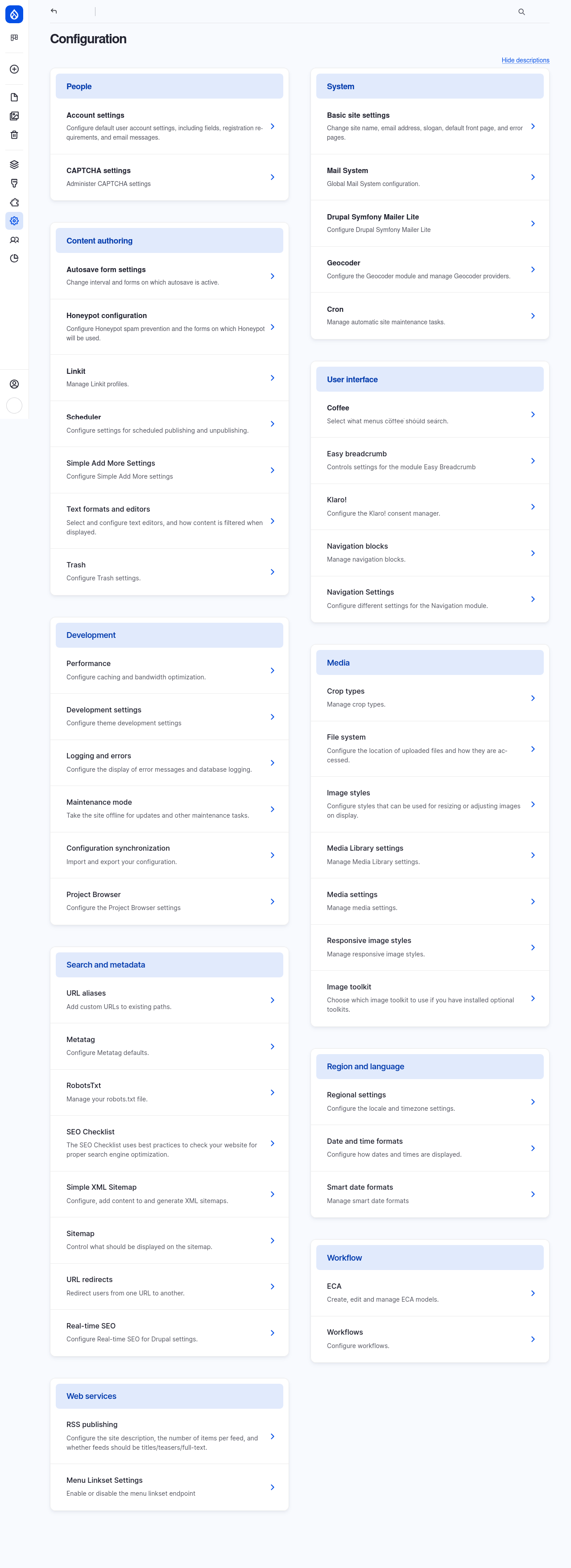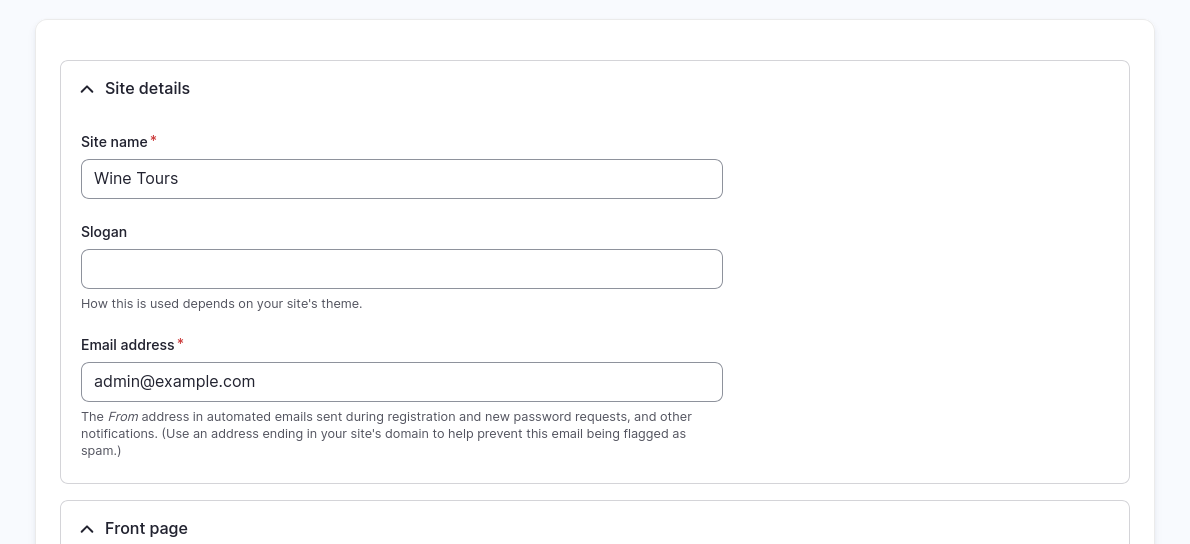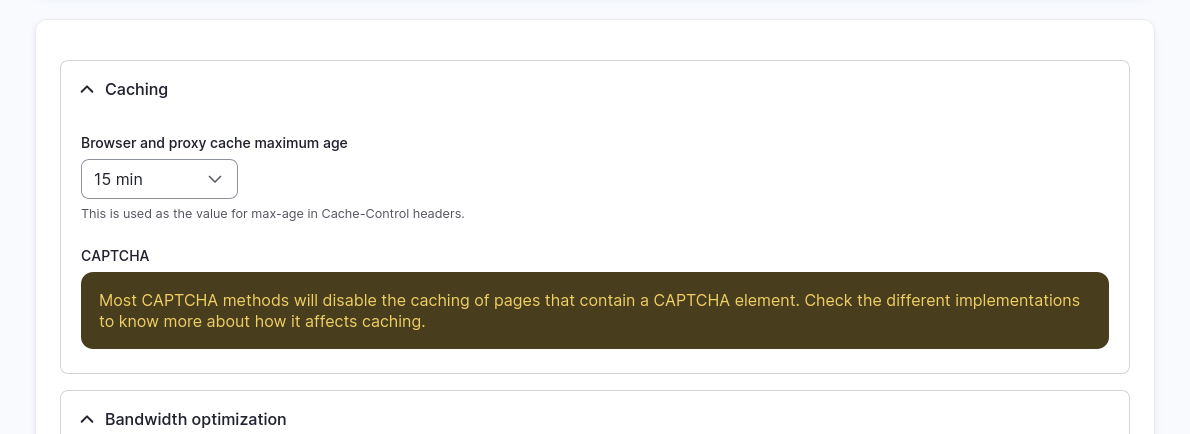Nearly everything about your Drupal CMS site is configurable.
Understanding how to navigate the Drupal CMS configuration options helps you quickly personalize and optimize your site. We'll use concrete examples to explain global settings like site name, email address, and caching settings, but the skills you learn here will help you explore and adjust other settings as well.
Drupal CMS has two general categories of settings: global settings, which affect your entire site (such as site name or site-wide email address), and feature-specific settings, which affect only particular aspects or features of your site (such as the configuration for formatting a specific field on a content type). This tutorial focuses primarily on locating and changing global settings that impact your entire website.
In this tutorial, you’ll develop the skill of identifying and changing configuration settings based on your site’s needs.
Back to topWhere to find global settings
You can manage global settings in Drupal CMS through the Configuration area. Here's how to reach it:
- In the administrative toolbar, click Configuration > Configuration (admin/config).
Drupal CMS groups settings on this page by related tasks such as System, Development, and User interface. Click into any of these sections to explore further.

You’ll see different configuration options depending on the modules you've enabled on your site. Each module can add its own settings, so your Configuration page might look different from other Drupal CMS installations.
Let’s walk through a couple of common tasks.
Back to topCommon task #1: Update basic site information
Let’s step through how to change basic site information like the site name or site-wide email:
- Navigate to Configuration > System > Basic site settings (admin/config/system/site-information).
- Review the fields for settings such as Site name and Email address.

- Enter your desired information. For example: "Wine Tours" and "admin@example.com."
- Click Save configuration to apply your changes.
- Click Back to site to return to your site's front page and verify the site name appears as expected.
You can use a similar approach to change other settings throughout Drupal CMS.
Back to topCommon task #2: Adjust performance settings
Performance settings, such as caching, help your Drupal website run faster and more smoothly:
- Navigate to Configuration > Development > Performance (admin/config/development/performance).
- Review options like caching and aggregation settings. Enable or disable these settings by selecting or clearing checkboxes.

- After you make your changes, click Save configuration.
You can follow this general process for many other configuration options.
Back to topFinding module-specific settings
You won’t find all settings through the main Configuration page. Some modules or features include their own dedicated settings pages, which you might find under different sections like Structure, Extend, or directly in the administrative menu.
If you can’t find a particular setting in the main Configuration page, try these alternatives:
- Check under the Structure (/admin/structure) menu for settings related to content types, taxonomy, and menus.
- Locate the module in the table on the Extend (/admin/extend) page and check whether it provides a Configure link.
- Visit the Reports (/admin/reports) section; some modules include settings or status information here.
Next steps
Now that you know how to find and adjust basic settings, you can explore other settings under Drupal’s Configuration page and beyond. Each configuration category contains clearly labeled options that help you quickly identify and manage site preferences.
If you feel unsure about a configuration change, test it out on a copy of your site first.
When you apply new recipes or enable additional modules, Drupal may offer more configuration options to help you customize your site further.
Back to topWrap-up
Drupal CMS offers numerous global settings that affect everything from your site’s name to how it optimizes CSS and JavaScript files. When you learn how to navigate the configuration options and customize them for your use case, you gain more control over your site’s functionality. Use the approach in this tutorial to explore further settings with confidence.
Back to top